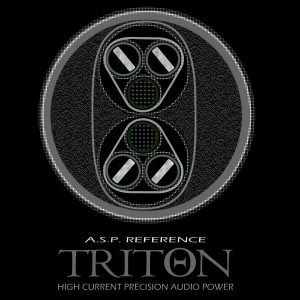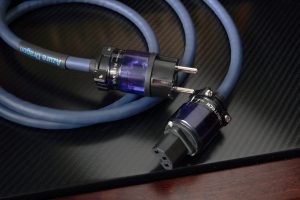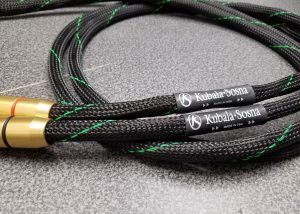One Monday night at Carnegie Hall, we found ourselves in the second row orchestra, way over on the right, in front of and looking up at the double basses (our eyes were level with the stage). When you purchase discount tickets, you take what they give you and don't complain. Obviously, the sound was problematic. The only good thing was a clear side view of the conductor and I enjoyed watching him emote.
Carnegie Hall main stage
At intermission I spied a pair of vacant seats over in the third row center, so we bolted. This was better, but still not good. At this proximity, an orchestra is simply too big to take in. But it inadvertently put together the elements of a peak sonic experience: We were within spitting distance of the soloist, Renée Fleming, the reigning diva of the classical vocal world!
Ah, Ms. Fleming, such a consummate performer! To paraphrase Charles McGrath in The New York Times, about the only thing her detractors can fault is her voice is too much of a good thing; it is so perfect critics find it bland. Not to me. For as long as she was on stage, I found it impossible to shift attention elsewhere. How was the orchestra's performance of Ravel's Shéhérazade? Jeeze—I couldn't say. I wasn't listening to them.
Direct vs. Reflected Sound
I've seen Ms. Fleming before, notably in Dvořák's Rusalka at the Metropolitan Opera (which she recorded twice), but this experience was radically different. On those occasions I was always at the distance of a football field from the stage.
Seated in the third row center, the grand Carnegie experience becomes intimate. It's nearly 100% direct sound, as close as you can get outside of a studio. The hall contribution has such a preposterously long decay time that your mind easily separates it. In audiophile lingua, the blending and smoothing hall contributions recede; crisp detail and texture are revealed.
TARA Labs New Arrivals
At some point during the performance, I began to reflect on some new wire products from TARA Labs. The Muse interconnects and speaker cables have this direct sound quality. They were a bellwether—so natural, neutral, and musical. I'm happy to say they are now resident in my reference system.
The Muse speaker cable
So when TARA mentioned there was a new power cord in The Muse series and would like it reviewed, I was enthusiastic. But first they sent me the Omega Evolution, the next to the best in TARA's nine levels of power cables. I have one latched onto my CH Precision L1 Preamp now.
The Softness Became Firm
I wasn't surprised that the OE multiplies and extends the effects of The Muse signal wires. (It would have been surprising if it didn't.)
Install a single OE and you will find soundstage dimensions and image size roughly the same (no shrinkage). However, space and dimension cues are more explicit and image edges come into focus. The blending and smoothing (and blurring) room contributions that fill in the spaces around the notes recede; the proportion of direct sound seems to be boosted. It's like moving your seat a couple of rows closer to the performance.
There's nothing loose or diffuse—no stray sounds in the presentation—but that doesn't mean it's hard either. While the focus is certainly 20/20 and instruments are located in fixed coordinates, their borders are soft and natural, i.e. there are no hard edges.
Bass Dynamics and Quality
If you play large scale symphonic works, you want power and heft. The OE will assist you here. The introduction of an OE brings immediate gains in weight and slam; it's like filling up the tank with premium fuel. Body increases dramatically, tone becomes dense and saturated, and macros have more sock.
There's a fresh aspect to the bass. Recorded bass is usually a big, flabby thing. With the OE's vise-like grip, the center and edges of low notes firm up and it becomes just like the other frequency bands. The transparency you normally find only in the mids and treble now extends throughout. Fresh texture and detail in the bottom are incredibly present. Note that the tonal temperature is cooler than before.
What Happened to the Ambiance and Bloom?
The removal of the "sound filler" in the spaces around instruments may cause some listeners to ask, "What about the ambiance? What happened to the bloom?"
To my mind the real question is was that stuff real? Was it actually on the recording or something added? We'll never be able to answer that with certainty, but my hunch is the OE portrayal is more faithful to the source. Every time you put on a new CD the ambiance changes. Many studio recordings are dry as dirt: that's what those should sound like in playback. Other CDs have a patently fake acoustic: you'll be aware of that, too. The OE is adamantly neutral. Whatever's on the recording will be in the playback. It won't manufacture "sound filler."
Timbral Fidelity
But if natural timbre has been preserved, ahhhh, you're in for a treat. And if the venue's acoustic has been captured in the recording, ahhhh. You may have noticed that in every TARA wire review I complement the outstanding timbre. It's something that I became sensitive to a long time ago and have noticed ever since.
Timbre and ambiance have always been strong suits for TARA Labs and the power cords are no exception. (Why a power cord effects timbre is baffling. Nevertheless, it is as audibly significant as changing interconnects.) The OE is capable of timbral shadings beyond the majority of cables on the market. Each instrument is captured faithfully. So, in a real sense, it is more beautiful and truthful than other wires.
Too Much of a Good Thing?
"It's easy to get great sound. It's simply a matter of taking out your credit card and filling up your rack with the best-reviewed gear. Then voilà, your membership card in the club is in the mail." This is a commonly heard impression when audiophiles get together. Hah! If only it were that easy!
Attaining great sound is analogous to preparing a fine meal: you have to create a harmonious blend with just the right flavors and seasoning. Too much salt or pepper will ruin it. Great systems are finely balanced machines. When you introduce a wire, a component, or a tweak, the scales will tip because everything has a signature. Maybe if you buy a complete system that a dealer has pre-tested it might be plug-n-play.
This is a preamble to what happened when I introduced a second OE. So far, all of the copy describes the effects of trying a single OE on several of my CH Precision components. Can introducing a second one be too much of a good thing? It depends.
With a second OE latched onto the CH D1 CD Transport—holy smokes! Dynamics were pumped up and energized. On double bass solos, I could hear the impact wave of the plucked string in the instant before it actually sounded in the body of the instrument. I'm sure it was below 20Hz, the threshold of auditory perception. It was a percussive, bodily sensation like the subterranean rumble of the subways.
Of course I enjoyed the power punch and heightened resolving power—it made me feel more involved—but ultimately I had to back off. My reference CH Precision gear is known to be neutral and resolving. The second OE pushed the sound too far that way and threw off the system's balance. Musical flow had taken a hit. It's all about synergy.
Of course, these results are highly installation dependent. I have a feeling the OE would have been extraordinary powering my CH monoblocks, but I couldn't test that assumption as the amps require a 20 amp power plug.
Sometimes Second Best is Best
Sometimes second (or third) best is best. Now we come to the brand-new power cable in The Muse series, which is three levels below the Omega Evolution. The Muse Power Cord is very much like the OE, only scaled back several degrees. Like the OE, it invests the music with a firm foundation, underpinning it so it becomes REAL SOLID. With The Muse PC, tonal balance didn't change, but tonal saturation sure did. Instruments move around FAST, and you get a similar tight, punchy low-end. Precision is ramped up; again, your seat moves closer to the performance, just not as close as the OE puts you. Latching The Muse onto the CH D1 CD Transport, the system balance was intact. The seasoning blend was just right.
Cosmetics and Cable Construction
If I were to rank my AC cables in order of girth, the Stage III Triton is the heaviest, largest diameter, and stiffest. Next comes the OE. The Muse PC is a scaled-down version of the OE, smaller in diameter, and less stiff. Then there is the K•S Elation! power cord. And, finally, there is Dynamic Design Neutron SW 16 Digital cord, a little thinner but also quite stiff.
A good deal of the heaviness of the OE can be attributed to its well-developed shielding and large conductor mass. Both TARA cords have a black dielectric outer covering and a Ceralex capsule latched to one end. This is a different formulation from that used for the interconnects. (Ceralex is a patented noise-reduction compound.) The OE has more of it. They do not bend or twist easily.
Conclusion
If you enjoy concertizing, you know venues are all over the map in sound quality, from downright ugly to bliss-inducing. I am very selective. Guess which ones are go-backs?
A well-treated room is designed to control or cancel some of the blurring room contribution and give you more direct sound, letting you hear more of the musician and less room. With that comes a whole other level of detail, texture, and musical insight.
A parallel can be drawn with high-end audio wires.
When you use either the Omega Evolution or The Muse power cables from TARA Labs, it's almost like walking into an acoustically treated room, or moving your seat closer to the performance. These cables ratchet up control and information delivery.
They demand to be seen as neutral, yet they are capable of truly beautiful tone and timbre. So, yes, you can have your cake and eat it, too. The Omega Evolution or The Muse power cables are excellent all-around performers. Take your pick depending on budget and system needs.
Omega Evolution AC
Retail: $12,000 / 1.8m
The Muse AC
Retail: $4200 / 1.8m
TARA Labs
550 Clover Lane, Ashland OR 97520
541.488.6465




















































